blog
Using Database Backup Advisors to Automate Maintenance Tasks

A disaster usually causes an outage, which can result in system downtime and potential loss of business-critical data. Once a blackout is detected, we trigger our disaster recovery plan to recover from it. But it would be a surprise if there is no backup, or after long hours of recovery, you see it’s not the one you need.
While outages can be costly, there is often a financial impact that can harm the business, and data loss may be a reason to close the company.
We need multiple copies of data in various places to minimize data loss. We can design our infrastructure in different layers and abstract each layer from the one below it. For instance, we build a layer for clusters of database instances to protect against hardware failure. We replicate databases across datacenters to defend ourselves against a data center failure. Every additional layer adds complexity, which can become a nightmare to manage. But still, in essence, a backup will take the central place in disaster recovery.
That’s why knowing that the backup is something we can rely on is it’s crucial. But how to achieve this? Well, one of the options is to verify if backups were executed based on the last few lines of the backup script.
A simple example:
#!/bin/sh
mysqldump -h 192.168.1.1 -u user -ppassword dbname > filename.sql
if [ "$?" -eq 0 ]; then
echo "Success."
else
echo "Error."
fiBut what if the backup script did not start at all? Google offers many search results for “Linux cron, not running.”
Unfortunately, open-source databases often do not offer a backup repository.
Another backup testing. You may have heard about Schrödinger’s cat. A known Schrödinger’s Backup theory is. “The condition of any backup is unknown until a restore is attempted.” It sounds like a simple approach, but such an attempt would mean you have to set up a test environment, copy files, and run restore … after every backup.
This article will show how you can use ClusterControl to ensure your backup is executed to achieve Enterprise-Grade databases with Open Source Databases.
Backup Reports
ClusterControl is aimed at operational reports. Operational Reporting provides support to day-to-day enterprise activity monitoring and control. The backup report is one of many. You can find reports like
- Daily System Report
- Package Upgrade Report
- Schema Change Report
- Availability
- Backup
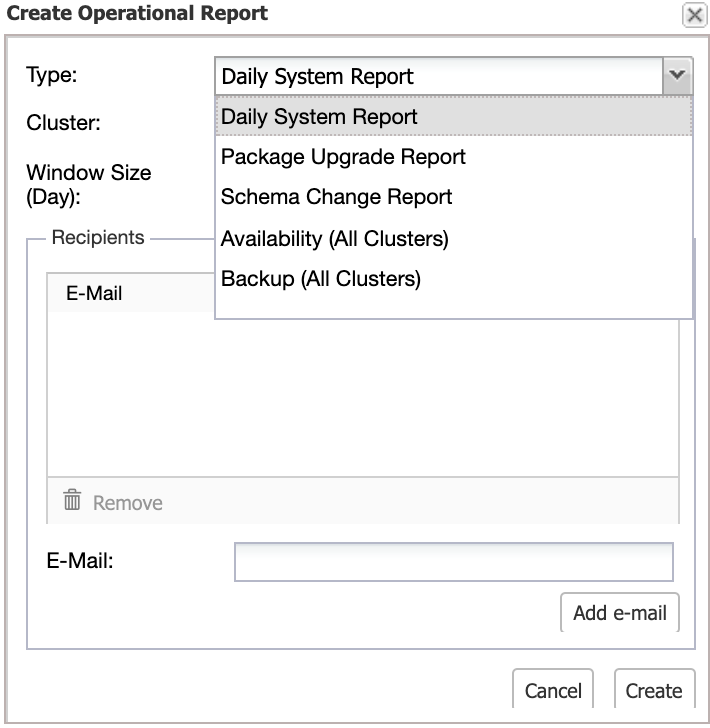
But why you would need this? You may already have an excellent monitoring tool with all possible metrics/graphs and set up alerts based on metrics and thresholds (some will even have automated advisors providing them recommendations or fixing things automatically.) That’s good – having visibility into your system is essential; nevertheless, you need to be able to process a lot of information.
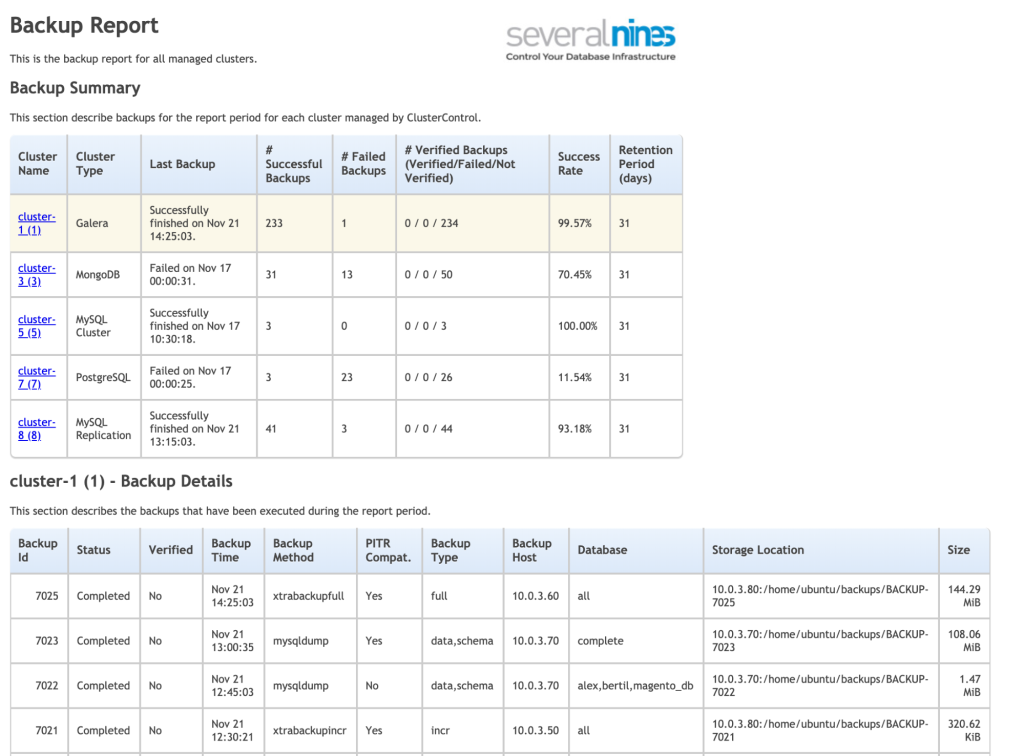
How does this work? ClusterControl collects information on the backup process, the systems, platforms, and devices in the backup infrastructure when the backup job is triggered. All that information is aggregated and stored in a CMON (internal database), so there is no need to query particular databases. Additionally, when it discovers that you have a running cluster, but there was no backup, it will be reported too.
You can track a backup ID in the report details with detailed data about the location, size, time, and backup method. Templates work with data for different database types, so you will get the same feel and look when you manage your mixed environment. It helps to manage different database backups better.
CLI Reports
For those who prefer the command-line interface, a good option to track backups ClusterControl Command Line Interface (CLI).
CLI lets you execute most of the functions available within ClusterControl using simple commands. Backup execution and backup reports are one of them.
When used in conjunction with the powerful GUI, it gives ClusterControl users alternative ways to manage their open-source database environments using whatever engine they prefer.
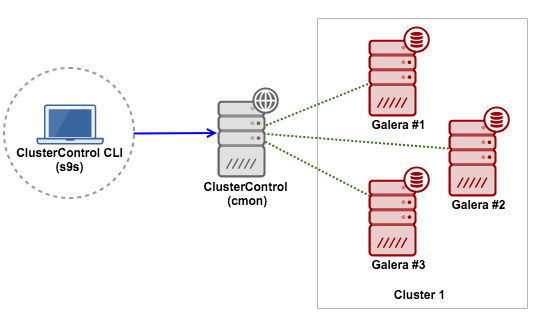
$ s9s backup --list --cluster-id=1 --long --human-readable
ID CID STATE OWNER HOSTNAME CREATED SIZE FILENAME
1 1 COMPLETED dba 10.0.0.5 07:21:39 252K mysqldump_2017-05-09_072135_mysqldb.sql.gz
1 1 COMPLETED dba 10.0.0.5 07:21:43 1014 mysqldump_2017-05-09_072135_schema.sql.gz
1 1 COMPLETED dba 10.0.0.5 07:22:03 109M mysqldump_2017-05-09_072135_data.sql.gz
1 1 COMPLETED dba 10.0.0.5 07:22:07 679 mysqldump_2017-05-09_072135_triggerseventsroutines.sql.gz
2 1 COMPLETED dba 10.0.0.5 07:30:20 252K mysqldump_2017-05-09_073016_mysqldb.sql.gz
2 1 COMPLETED dba 10.0.0.5 07:30:24 1014 mysqldump_2017-05-09_073016_schema.sql.gz
2 1 COMPLETED dba 10.0.0.5 07:30:44 109M mysqldump_2017-05-09_073016_data.sql.gz
2 1 COMPLETED dba 10.0.0.5 07:30:49 679 mysqldump_2017-05-09_073016_triggerseventsroutines.sql.gzBeginning from version 1.4.1, the installer script will automatically install this package on the ClusterControl node. CLI is part of s9s-tools package. You can also install it separately on a different machine to manage the database cluster remotely. Similar to ClusterControl it uses secure SSH communication.
Automatic Backup Verification
A backup is not a backup if we cannot retrieve the data. Verifying backups is something that many companies usually overlook. Let’s see how ClusterControl can automate backup verification and help avoid surprises.
In ClusterControl, select your cluster, go to the “Backup” section, and then select “Create Backup.”
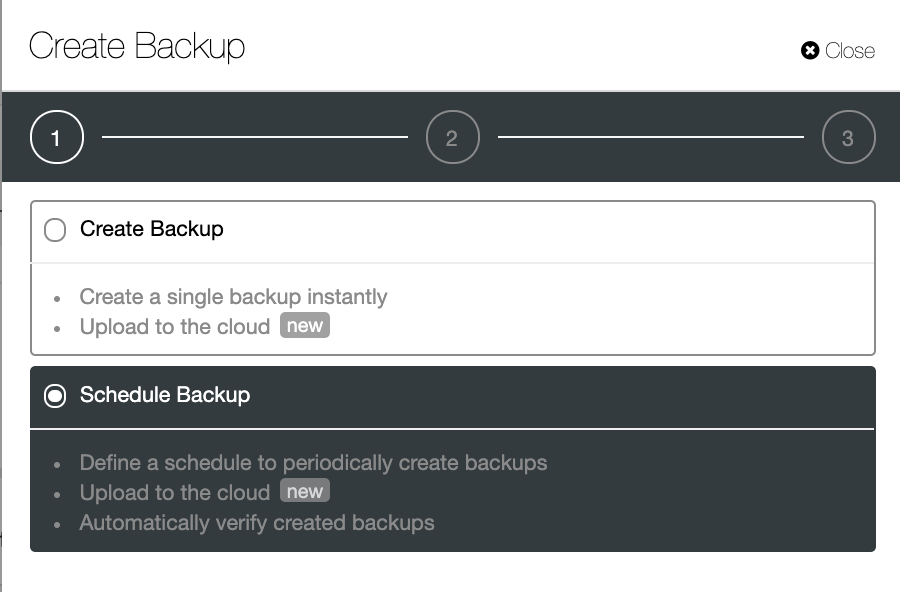
The automatic verify backup feature is available for the scheduled backups, so let’s choose the “Schedule Backup” option.
When planning a backup, in addition to selecting the standard options like method or storage, we also need to specify schedule/frequency. In this example, we are going to set up MySQL backup verification. However, the same can be achieved for PostgreSQL and Timescale databases.
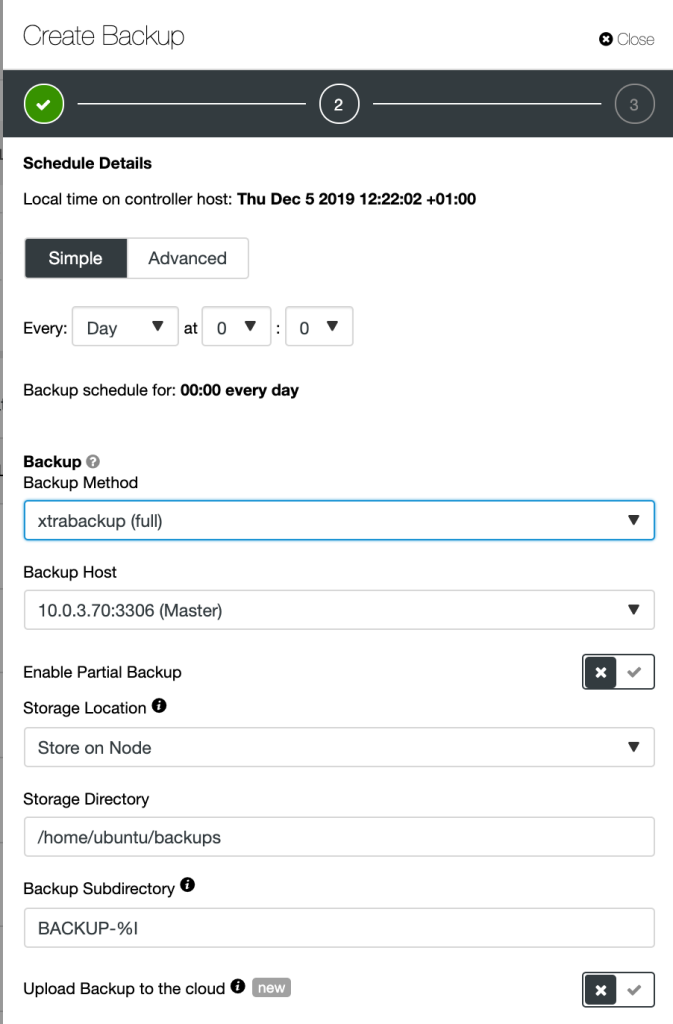
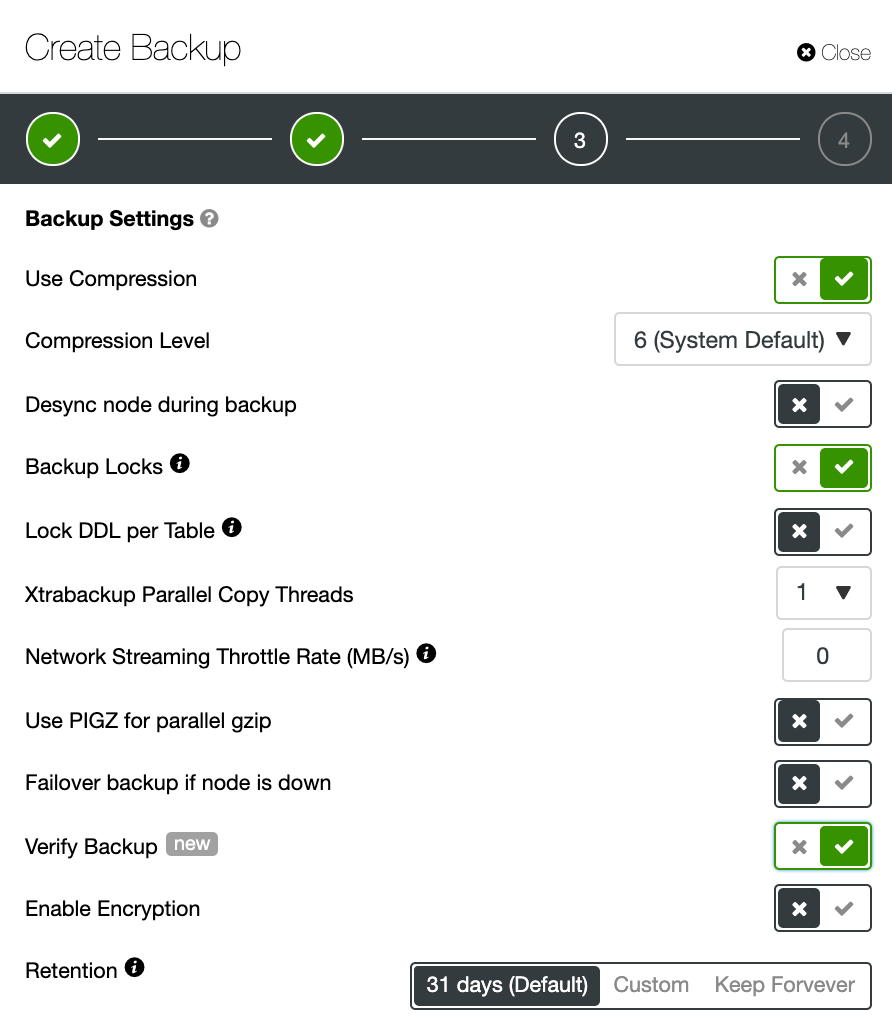
When backup verification is checked another tab will appear.
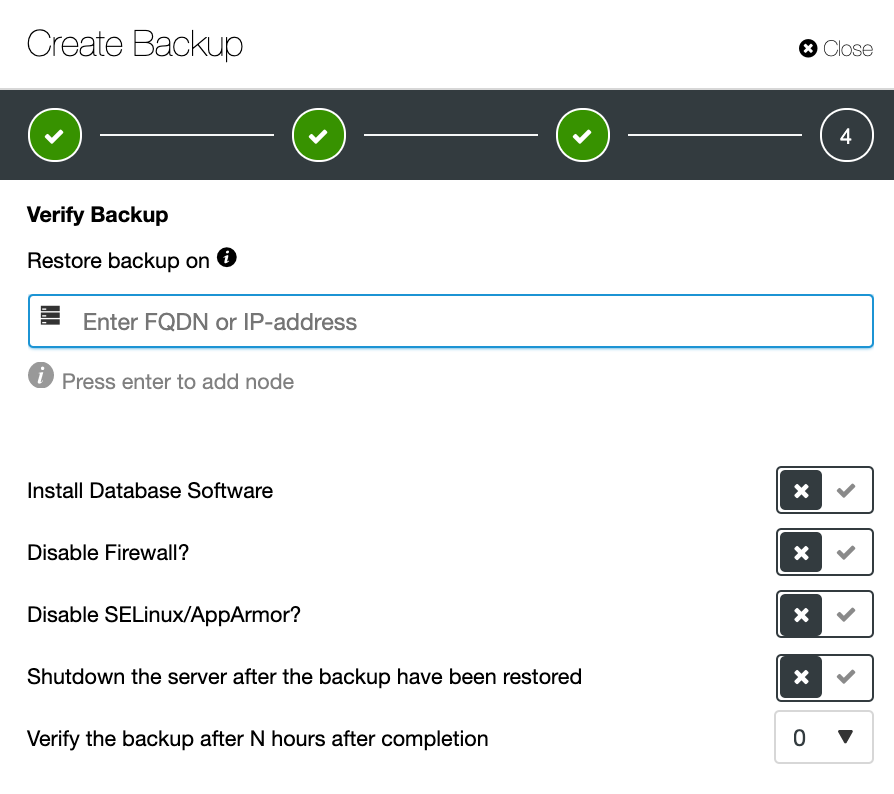
Here we can set all the necessary steps to prepare the environment. When the IP is provided, we are good to go and schedule such a backup. Whenever backup finishes, it will be copied to a temporary backup verification environment (“restore backup on” option). After a successful refresh, you will see the verification status in the backup repository tab
Failed Backup Executions and Integration Services
Another exciting opportunity to get more clues about backup execution is to use ClusterControl Integration services. You can control the backup execution status with third-party services.
Third-party tools integration enables you to automate alerts with other popular systems. Currently, ClusterControl supports ServiceNow, PagerDuty, VictorOps, OpsGenie, Slack, Telegram, and Webhooks.
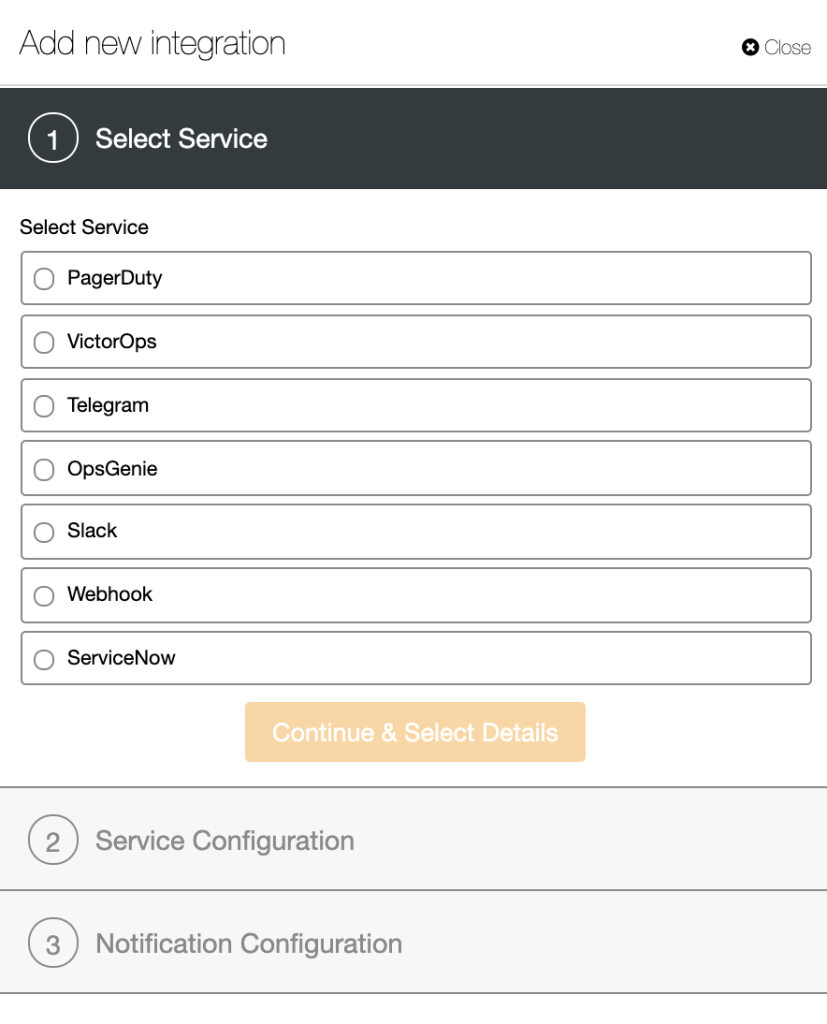
Below we can see an example of Slack channel integration. Whenever a backup event occurs, it will appear in the slack channel.

Conclusion
Backups are mandatory in any environment. They help protect your data and are at the center of any disaster recovery scenario. ClusterControl can help automate the backup process for your databases and restore it in case of failure with a few clicks. Also, you can be sure the backups are executed successfully and are reliable, so you will not lose your data in case of disaster.
Want to read more about this topic? Check out this article on ways to manually check your logical backups to avoid problems down the line should you wish to restore the data from a backup. Be sure to follow us on Twitter and LinkedIn and subscribe to our newsletter to stay up-to-date with the latest.




